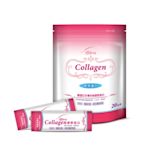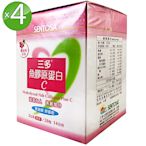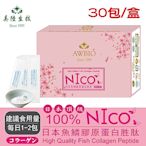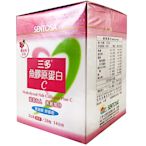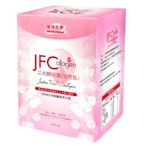搜尋結果
 $309【桂格官方直營】天地合補-膠原蛋白玫瑰四物飲(6入/盒)購物中心
$309【桂格官方直營】天地合補-膠原蛋白玫瑰四物飲(6入/盒)購物中心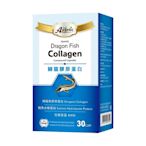 $499Angelic 艾吉力 鱘龍膠原蛋白複方膠囊 30粒/盒 專利紅藻萃取 鮭魚水解蛋白 軟骨素 二型膠原蛋白購物中心
$499Angelic 艾吉力 鱘龍膠原蛋白複方膠囊 30粒/盒 專利紅藻萃取 鮭魚水解蛋白 軟骨素 二型膠原蛋白購物中心 $1129【VIGILL 婦潔】膠原蛋白胜肽(日本製造) 30包/盒 (溫活系列 膠原蛋白 養顏 青春 美妍)購物中心折價券
$1129【VIGILL 婦潔】膠原蛋白胜肽(日本製造) 30包/盒 (溫活系列 膠原蛋白 養顏 青春 美妍)購物中心折價券 $2640【達摩本草】日本膠原蛋白胜肽珍珠粉x4盒 (15包/盒 )購物中心
$2640【達摩本草】日本膠原蛋白胜肽珍珠粉x4盒 (15包/盒 )購物中心![統欣生技 活力計畫 膠原蛋白(20包/袋) 統欣生技 活力計畫 膠原蛋白(20包/袋)]() $590統欣生技 活力計畫 膠原蛋白(20包/袋)購物中心
$590統欣生技 活力計畫 膠原蛋白(20包/袋)購物中心![【達摩本草】日本膠原蛋白胜肽珍珠粉x2盒 (15包/盒) 【達摩本草】日本膠原蛋白胜肽珍珠粉x2盒 (15包/盒)]() $1320【達摩本草】日本膠原蛋白胜肽珍珠粉x2盒 (15包/盒)購物中心折價券
$1320【達摩本草】日本膠原蛋白胜肽珍珠粉x2盒 (15包/盒)購物中心折價券![三多 魚膠原蛋白C 4入組(28包/盒) 三多 魚膠原蛋白C 4入組(28包/盒)]() $1820三多 魚膠原蛋白C 4入組(28包/盒)購物中心
$1820三多 魚膠原蛋白C 4入組(28包/盒)購物中心![【美陸生技】100%日本NICO魚鱗膠原蛋白【30包/盒(經濟包)】AWBIO 【美陸生技】100%日本NICO魚鱗膠原蛋白【30包/盒(經濟包)】AWBIO]() $1980【美陸生技】100%日本NICO魚鱗膠原蛋白【30包/盒(經濟包)】AWBIO購物中心
$1980【美陸生技】100%日本NICO魚鱗膠原蛋白【30包/盒(經濟包)】AWBIO購物中心![三多 魚膠原蛋白C(28包/盒) 三多 魚膠原蛋白C(28包/盒)]() $480三多 魚膠原蛋白C(28包/盒)購物中心
$480三多 魚膠原蛋白C(28包/盒)購物中心![康瑞肽樂 JFC日本100%魚膠原蛋白(胜肽)(2g*60條/盒) 康瑞肽樂 JFC日本100%魚膠原蛋白(胜肽)(2g*60條/盒)]() $920康瑞肽樂 JFC日本100%魚膠原蛋白(胜肽)(2g*60條/盒)購物中心
$920康瑞肽樂 JFC日本100%魚膠原蛋白(胜肽)(2g*60條/盒)購物中心![sakuyo 膠原蛋白胜肽 日本製造原裝進口(20入/盒) 2盒組 sakuyo 膠原蛋白胜肽 日本製造原裝進口(20入/盒) 2盒組]() $2210sakuyo 膠原蛋白胜肽 日本製造原裝進口(20入/盒) 2盒組購物中心
$2210sakuyo 膠原蛋白胜肽 日本製造原裝進口(20入/盒) 2盒組購物中心![統欣生技 活力計畫 膠原蛋白(20包/袋)x2 統欣生技 活力計畫 膠原蛋白(20包/袋)x2]() $780統欣生技 活力計畫 膠原蛋白(20包/袋)x2購物中心
$780統欣生技 活力計畫 膠原蛋白(20包/袋)x2購物中心
Type III collagen is one of the fibrillar collagens whose proteins have a long, inflexible, triple-helical domain. [5] Protein structure and function[edit] Type III collagen is synthesized by cells as a pre-procollagen. [6] The signal peptide is cleaved off producing a procollagen molecule.
Vitamin C is vital for collagen synthesis, and Vitamin E improves the production of collagen. HCR- FISH visualization of collagen expression in P. waltl. Depending upon the degree of mineralization, collagen tissues may be rigid (bone) or compliant (tendon) or have a gradient from rigid to compliant (cartilage).
Type I collagen can be found in a myriad of different places in the body, mainly forming the matrix of connective tissues. It is present in scar tissue as well as tendons, ligaments, the endomysium of myofibrils, the organic part of bone, the dermis, the dentin, and organ capsules.
Type II collagen is the basis for hyaline cartilage, including the articular cartilages at joint surfaces. It is formed by homotrimers of collagen, type II, alpha 1 chains. It makes up 50% of all protein in cartilage and 85–90% of collagen of articular cartilage. Type II collagen is organised into fibrils.
Amino acids are organic compounds that contain both amino and carboxylic acid functional groups. [1] Although over 500 amino acids exist in nature, by far the most important are the 22 α-amino acids incorporated into proteins. [2] Only these 22 appear in the genetic code of life.
Protein efficiency ratio. Protein efficiency ratio (PER) is based on the weight gain of a test subject divided by its intake of a particular food protein during the test period.
Escherichia coli ( / ˌɛʃəˈrɪkiə ˈkoʊlaɪ / ESH-ə-RIK-ee-ə KOH-lye) [1] [2] is a gram-negative, facultative anaerobic, rod-shaped, coliform bacterium of the genus Escherichia that is commonly found in the lower intestine of warm-blooded organisms.
Vitamin B12, also known as cobalamin, is a water-soluble vitamin involved in metabolism. [2] It is one of eight B vitamins. It is required by animals, which use it as a cofactor in DNA synthesis, and in both fatty acid and amino acid metabolism. [3]
Paracetamol ( acetaminophen [a]) is a non-opioid analgesic and antipyretic agent used to treat fever and mild to moderate pain. [13] [14] [15] It is a widely used over the counter medication. Common brand names include Tylenol and Panadol .
Lysergic acid diethylamide, commonly known as LSD (from German Lysergsäure-diethylamid ), and known colloquially as acid or lucy, is a potent psychedelic drug. [12] . Effects typically include intensified thoughts, emotions, and sensory perception. [13] .
